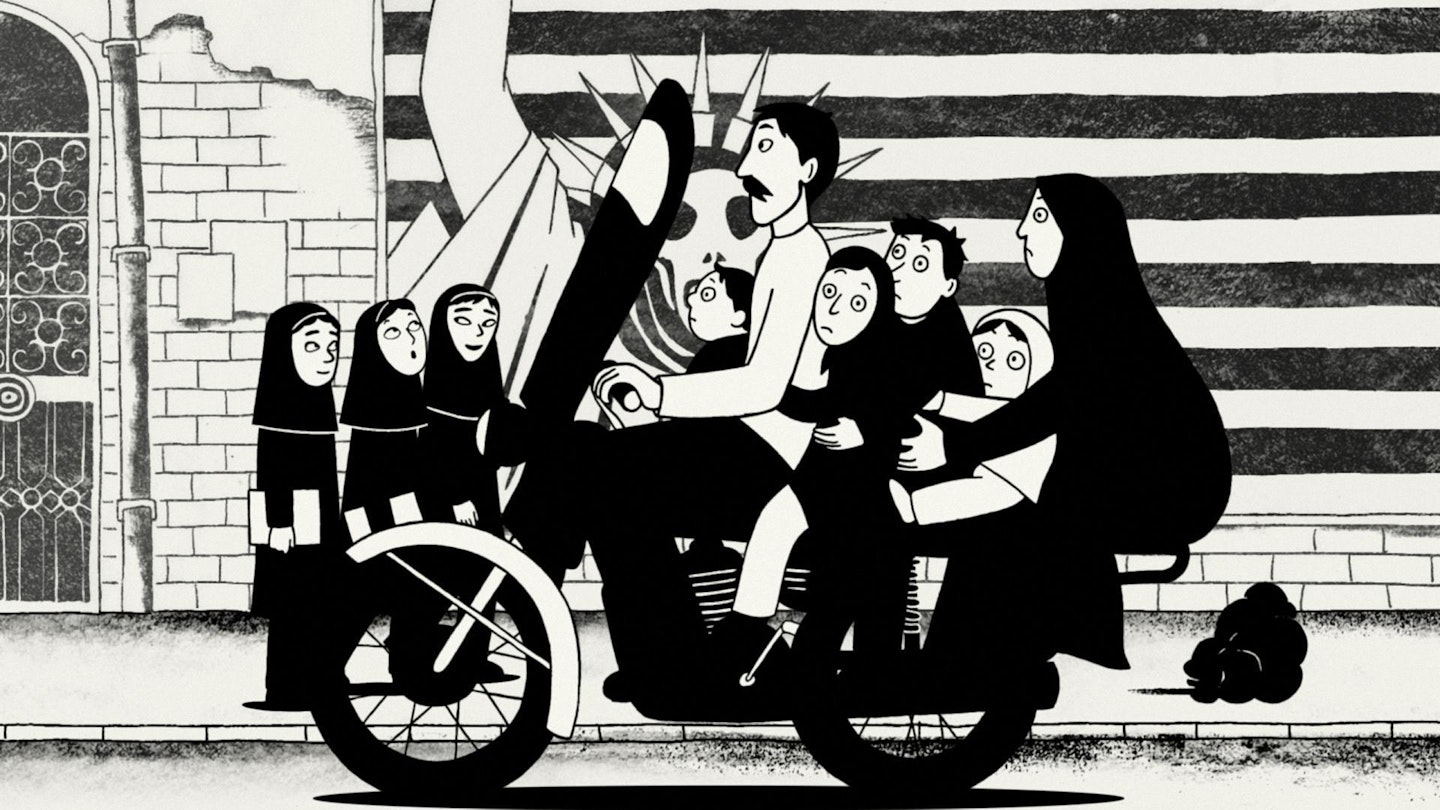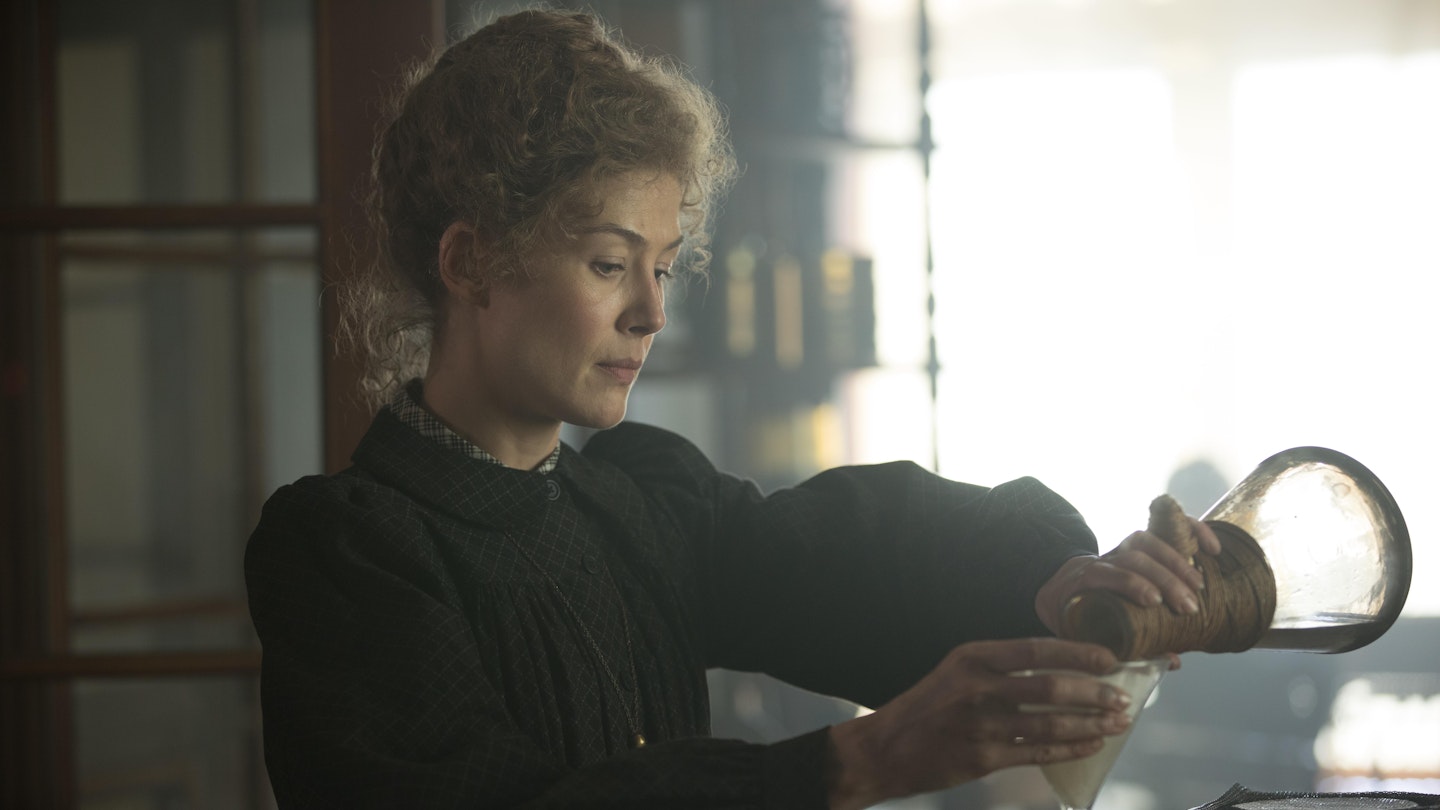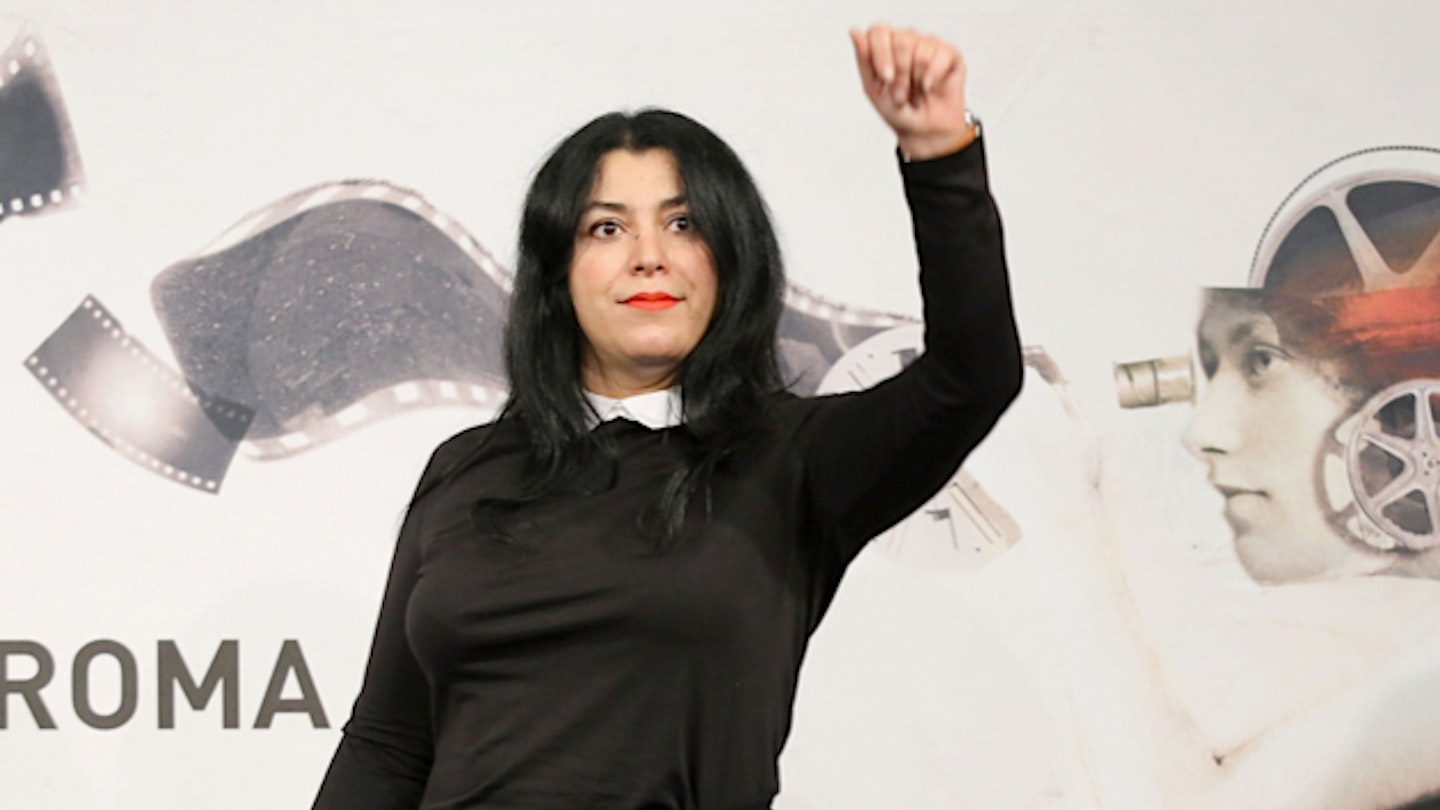From Pixar down, the general trend in animation over the last few years has been clear. The movement is towards ever more realistic and textured canvases that paint an exquisitely detailed world in glowing shades of pure, pixellated magic. Persepolis, however, is an exception to the rule, a throwback every bit as successful as Aardman’s work with clay. This largely black-and-white, defiantly undetailed and sometimes stylised film could have been made at any point since the dawn of cinema, and yet it’s a thoroughly modern affair.
An autobiographical tale that was written as a graphic novel, adapted for the screen and then co-directed by its chief character, Marjane Satrapi, this is a highly personal look at a situation of real complexity. Satrapi was six, born into a prosperous Tehran home, when the Iranian Revolution swept away the Shah Of Iran and the country’s autocracy was replaced with extremist rule. The war with Iraq that raged for seven years then destroyed much of Iran’s wealth, and the subsequent religious crackdowns killed any hope Satrapi and her family had of democratic freedom as well.
The film is at its strongest when examining the turbulent history of Iran through Marjane’s eyes. Marjane-as-a-child is one of the most appealing characters in years, happy to embrace new ideas like the latest Igglepiggle and believing herself, briefly, to be a prophet appointed by God. That’s not to say that she isn’t spoiled, wilful and occasionally cruel - witness Marjane and friends deciding to arm themselves with nails and torture a classmate whose father worked for the secret police. But there’s an innocence and exuberance to her schemes that is endlessly charming, and having a child as our guide perfectly pitches the history for those of us who know little about Iran’s murky politics. In a sense, the film is the antithesis of most modern animation: where they tell a relatively simple story using complex instruments, this uses very basic tools to tell a story about a very complex time.
The film’s second act, wherein Marjane grows up alone in Austria and loses her way, is less winning but still involving, a sometimes bleak counterpoint to her earlier optimism. But if that middle section introduces something of a minor note, the tempo picks up again with her return to a transformed, more hardline Iran. Still bolshy, Marjane doesn’t fit into that strictly monitored society, but it’s in that defiance that she rediscovers her zest for life.
That second half provides a powerful argument that our origins shape who we become - no matter how far we travel. Marjane can’t be content in Europe after being sent into exile from her home, but equally can’t stomach the restrictions of an Islamic state after being raised in a free Iran and then in Europe. The film is ultimately the story of her quest to find a balance between homeland and freedom, when her nation has failed to do the same. Satrapi’s willingness to acknowledge, and make fun of, her own faults makes this a story with real depth, and in these hysterical times, the sight of a young girl standing up to fundamentalist bullies is a vital counterpoint to the West’s tendency to tar all Middle Easterns with the same terrorist brush.


